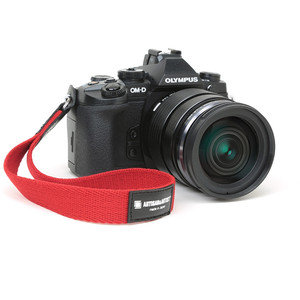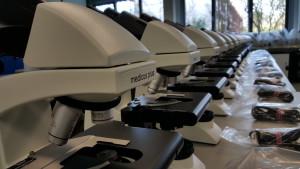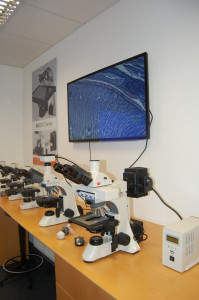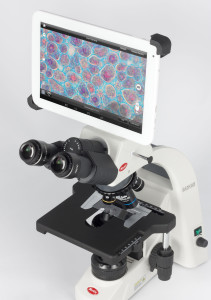The leaves and prices are falling this autumn!
You can find our colorful selection of special offers here in the shop. Get them now!
The offer is valid from September 23rd to November 28th, 2024 and only while supplies last!
The leaves and prices are falling this autumn!
You can find our colorful selection of special offers here in the shop. Get them now!
The offer is valid from September 23rd to November 28th, 2024 and only while supplies last!
PISA (the Programme for International Student Assessment) is a study promoted by the Organisation for Economic Co-operation and Development (OECD), the last of which took place in 2015. For the Pisa Study the tasks in natural science were set up in the following form: Experiments were simulated and students were stimulated to look out for creative, new solutions. The results showed that expert knowledge is the strong point in Germany, for example. Internalizing scientific concepts and methods, while dealing with these concepts in a creative way appears to be more difficult for German pupils, for example, than for Asian children. This lack of creativity correlates with the statement that juveniles find natural sciences, neither particularly significant nor attractive, even if they perform very well in such subjects.
According to information issued by employers, in October 2016 a significant number of critical STEM (Science Technology Engineering and Maths) jobs will remain unfilled by skilled employees. Making instruction more exciting and scientific can achieve an improvement in STEM vacancies. Schools must therefore approach technical standards and teach the currently valid scientific methods. Juveniles of today have grown up in the digital world. But in the schools they are confronted with analogue scientific equipment from the last century.
On the one hand, this situation leads to demotivation, and on the other hand it gives the pupils a false impression of procedures used in modern science. The intensive development of already existing digital competences would be of utmost importance, because scientific work calls for the linkage of various programs for evaluation, processing and documentation of results. Scientific trials in schools should therefore also comprehensively illustrate this process. Some microscope manufacturers have realized this fact and developed simple, robust digital microscopes. For primary schools there are reasonable, excellent hand microscopes available, which are most suitable for outdoor use.
For the examination of materials, stereo microscopes with an integrated camera are the best choice. Pupils in the upper secondary use high-resolution, digital microscopes for their experiments. In combination with a PC, these microscopes enable a complete trial run with adequate documentation.
All microscopes are delivered with the corresponding software to control photography and further processing of the documented images. Providing a school with modern equipment is a major investment, which, in many cases, cannot be covered by the school budget. Should employers, who are desperately looking for experts in the STEM subjects, pay out of their own pockets?
| Upright microscopes | Motic | RED50X 40x- 400x; DM-5240x-400x; DM-111 40X – 1000X, monokular |
| Euromex | EcoBlue Series: 40x – 400x; 40x – 600x; 40x – 1000, monocular | |
| Euromex | BioBlue Series: 40x – 400x; 40x – 600x; 40x – 1000X | |
| Optika | B-150: 4x – 400x; DM-5UP : 40x – 400x , monocular | |
| Stereo microscopes | Euromex | EduBlue: 10x – 40x |
| Hand microscopes | Omegon | Omegon DigitalView USB-Hand Microscope |
| Euromex | Q-Scope: 200xSeveral models | |
| Bresser | USB-Hand Microscope incl. LED Stand |
Standard is boring! In times when many people have the craziest hair colours, wear more and more colourful sports shoes and new cars come in two or even three colour combinations, it is also time to have your own binoculars in an exclusive colour design.
However, it would be just impossible for us to change the colour of the rubber armouring or the leather from the colour offered by the manufacturer. But special accessories can help show that these are your own personal binoculars.
The easiest way to make your gear more individualized is by using a new carrying strap. At this point we would like to introduce some new products:

The thriftier Red Label series from ARTISAN&ARTIST is made in China. Special attention should be paid here to the two-coloured variant RDS-AC2310. The AC320 features a small accessories bag for a cleaning cloth or similar accessories.
We also offer many other comfort carrier straps and swimming straps in our section of binocular accessories. Lots of fun when browsing through!
And once again, we have a new brand name that was missing in our already wide range of products: the still very young brand Hawke Optics. Founded by Paul Walker in the 1980s, this brand has become part of the Deben Group Inc. Ltd., which sells even more well known brand products for outdoor use and marksmen, in addition to binocular-related products.
This English enterprise produces binoculars, spotting scopes, range finders, rifle scopes as well as matching accessories in the medium to low price range. The rifle scopes, in particular, have already proved themselves with their excellent price/performance ratio in some tests conducted by leading hunting magazines. Now we would like to introduce some product series in more detail.
Binoculars:
The Sapphire ED and Frontier ED-Series is a persuasive product with its high-quality multilayer coating, phase corrected roof prism and ED-lenses and thus a maximum in transmission, image sharpness and clarity.
In addition, the Sapphire-Series offers you a dielectric coating on the roof prism for even more brightness and the models from 32 mm and up are delivered in a sturdy hard shell case made of real leather.
The Endurance-Series comes with a special easy to grip rubber armouring, the pattern of which reminds you of the fish skin patter of a rifle stock. The Nature-Trek and Vantage-Series mainly appeals to price conscious customers, who would want good quality, on a small budget.
The Frontier and Endurance-Series are spotting scopes with a zoom eyepiece. Many of these models are also equipped with high-quality ED-glass lenses. With the large focus ring or the dual focus, you can quickly change the magnification, but also focus on details in a bird’s feathers. The numerous Digiscoping adapters allow you to digitally capture and share your observations.
The Professional Rangefinder is available in 3 variantions: They differ in their maximum measurable distance of 400, 600 or 900 meters. All models come with a 6-fold magnification and the possibility to measure the angle or the height of an object with an accuracy of +/- 1m, besides the horizontal distance
Hund GmbH? Who is Hund GmbH? When it comes to high quality microscopes the names ZEISS and Olympus immediately spring to mind, but not Hund. Even though the company Hund is one of two who have their microscopes tested to meet the requirements of the Medical Device Act (§3 of the Medical Device Act). Of substantial effort: quality and suitability of the models is first tested by the German association TÜV, and, if positive, will receive a certificate. The manufacturer, in this case, Hund GmbH, must then guarantee uniform quality and issue an EC Declaration of Conformity. For this purpose each microscope that is intended for In-Vitro-Diagnostics is assembled and tested in Germany and is then marked with the CE-sign as a seal of approval.
 There are also limitations, when it comes to consultation (also by phone) and the sales of these products. According to §31 MPG any IVD – equipment must only be operated by qualified and trained personnel.
There are also limitations, when it comes to consultation (also by phone) and the sales of these products. According to §31 MPG any IVD – equipment must only be operated by qualified and trained personnel.
Based on our education as biologists and technicians we, the members of the microscopy team, have profound expert knowledge in selling JVD products. Since our visit to Co. Hund GmbH at the beginning of November, we also meet the requirements of an introduction into the specific “In-vitro-Diagnostica” from Co. Hund.
At the same time we had the opportunity to be convinced by the quality of the equipment, once again, a very enthusiastic experience. During our training course, Dr. Jörg Haus gave us an introduction to the optical details, which he did not mention in his book “Optical Microscopy”. Excited by this new experience, we will, in the future, create a new field “In-vitro-Diagnostic” and try hard to get further equipment from this area.
 Motic is a microscope manufacturer, who has specialized in digital microscopy and has taken a leading position in this field in the world market.
Motic is a microscope manufacturer, who has specialized in digital microscopy and has taken a leading position in this field in the world market.
The Motic manufacturing plant, including its research & development department with approx. 100 developing engineers, is located in Xiamen / China. Motic has branch offices all over the world, their German branch is located in the picturesque town Wetzlar, also the home of Leica and Hund.
In the middle of October, our microscopy team’s long lasting wish came true. We accepted an invitation to visit Motic in Wetzlar to receive an introduction to the brilliance of their microscope cameras.
After a comprehensive introduction, we transitioned over to the practical part of the training.
We had already viewed the HDMI-camera at the Analytica 2016 – cameras, which are particularly suitable for life transmissions in education.
The high image frequency in combination with impressive image sharpness had already convinced us by then.
The Moticam X can be recommended, if image processing and microscope are not positioned side by side. This may be in a laboratory or in the class room. The X2, which comes with its own battery and therefore acts completely independently, is particularly convincing. The control works via smartphone app or directly via the browser.
 Cameras in connection with tablets are in the meantime available from almost every company, but the Motic 5MP – camera with tablet holder deserves being highlighted by its extremely sharp, colour sensitive image and the user-friendly control program. Working with these cameras is simply fun and the price/performance ratio is OK.
Cameras in connection with tablets are in the meantime available from almost every company, but the Motic 5MP – camera with tablet holder deserves being highlighted by its extremely sharp, colour sensitive image and the user-friendly control program. Working with these cameras is simply fun and the price/performance ratio is OK.
Just a short note concerning the well-known 3 MP and 10 MP cameras, these well proven cameras are now available as 3MP+ and 10MP+ with USB 3- port, which increases the image transfer rate at a resolution of 2046 x 1536 from 3 to 16 fps (frames per second). As a supplement there is also a 5MP+ camera available.
Every year the most important tradeshow for ambitious bird watchers (twitchers) and nature photographers takes place in Egleton, Rutland in England: the Birdfair. This tradeshow may just be the biggest end-customer fair for followers of this hobby in Europe. More and more manufacturers use this platform to present their new products.
Here some of the highlights of this year’s fair:
ZEISS featured the new Conquest Gavia spotting scope. A completely new development with an oblique viewing position and a new wide angle eyepiece. The premium manufacturer from Wetzlar now also uses the large focus ring, as some competitors also do. At the same time ZEISS presented a range of useful accessories, for example, a new Carbon tripod set or a photo adapter for cameras with filter threads in various diameters, which are clamped by the eyepiece. And due to their cooperation with the company ExoLens, ZEISS now, for the first time, has a Smartphone digiscoping solution. It consists of a adapter ring and the so-called ExoLens Bracket (holder for the smartphone). These brackets are available for the Apple iPhone 6/6s and the Samsung Galaxy S6/S6 edge. ZEISS presented even more adapter rings, so that the ExoLens Bracket can also be used on the currently available binocular models from ZEISS.
Apart from that, ZEISS had a revised version of the Victory SF on display for examination. Here the colour of the rubber armouring was changed to black, following public requests. And also the eyepiece caps now have an additional locked position. This allows an even more individual adjustment for eye relief. The focus mechanics have also been slightly improved.
The other major manufacturer from Wetzlar, LEICA, already announced a few weeks ago, that they would present some new products during the fair. The new Leica top model of the type 42 binoculars is available under the name Noctivid. This name is derived from the Latin “Noctis”, meaning Night, and surely reminds friends of Leica photography of the fast Noctilux lenses. However, with a transmission of approx. 92% (acc. to the manufacturer), it is still no night vision equipment, but for the needs of ornithologists it is surely more than adequate.
For most nature observers it may be more important that Leica can now also compete against major competitors in the close-range area. With a close range distance of only 1.9 meters you can watch butterflies, dragonflies, spiders and other insects. Furthermore, the new Noctivid now comes with an open bridge structure, which considerably improves handling, especially when holding the binocular with one hand. Apart from that, Leica currently offers a complete combination consisting of spotting scope, camera and all necessary adapters. Optionally with angled or straight view, 82 or 65 mm lens diameter.
For twitchers no longer an insider tip: The company KOWA has expanded its Genesis model range. Besides the previous type 44 and 33, they now also offer pocket binoculars with a 22-millimetre lens diameter. This “hand full of binoculars” is available with 8-fold and 10-fold magnification. Due to the Prominar XD lenses, it can easily compete with the top-level binoculars from ZEISS, Leica or Swarovski. Unfortunately “high performance optics” cost a lot of money, the prices recommended by the manufacturers are therefore comparable with the prices of top models from Europe.
Nikon also presented new products: the new Monarch ED spotting scopes and the new Monarch HG binoculars. Both the scopes as well as the binoculars were equipped with a “Field Flattener Lens”, which reduces the field curvature and thus increases the marginal sharpness. Unfortunately Nikon only offers digiscoping solutions for their in-house system camera Nikon 1 and the compact cameras with small zoom range, which are becoming increasingly rare.
Last but not least, the new Legend E-, L- and M-Series from Bushnell are now available. These binoculars rather appeal to the ambitious novice of this hobby, who is looking for a very good pair of mid-range binoculars and for whom a ZEISS Conquest HD, Swarovski SLC or Leica Trinovid HD is simply too expensive. At this point we can offer you the predecessor Bushnell Legend Ultra HD in 10×42.